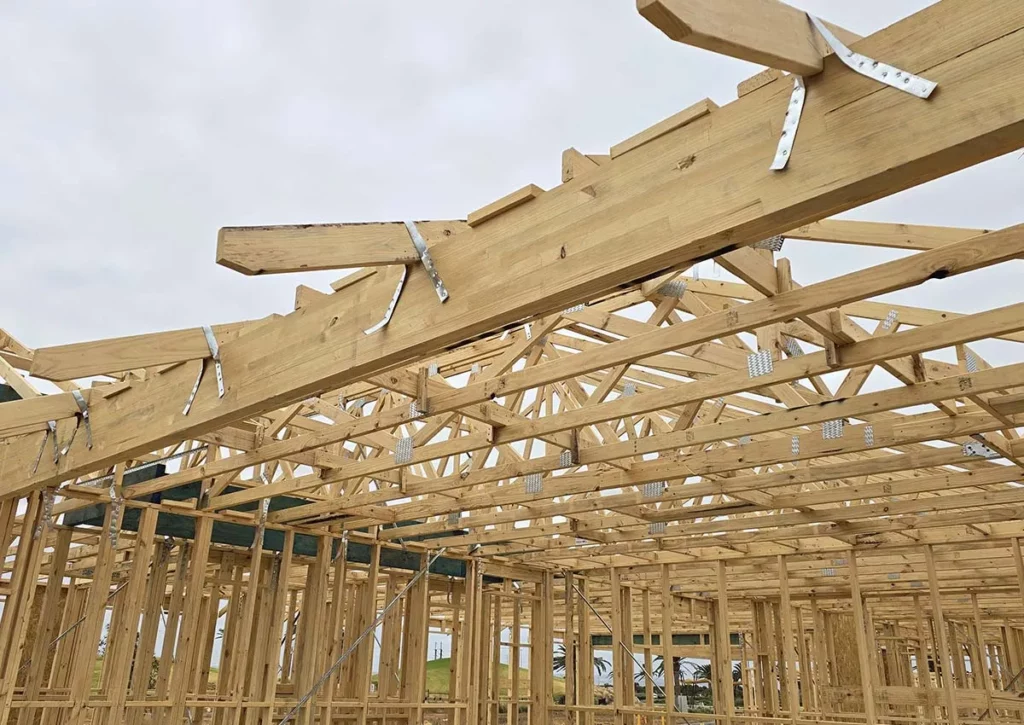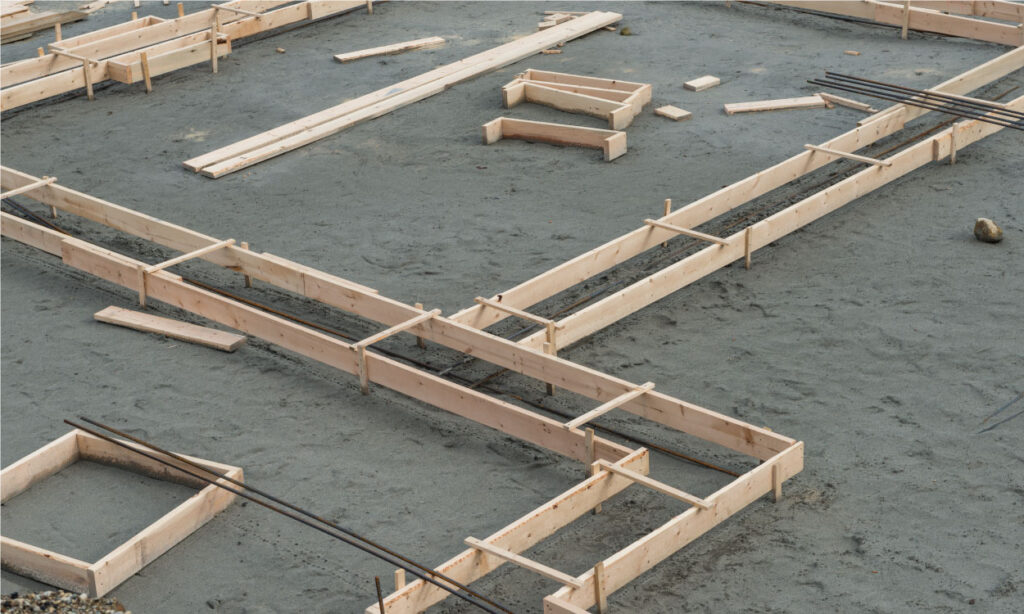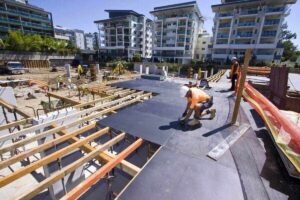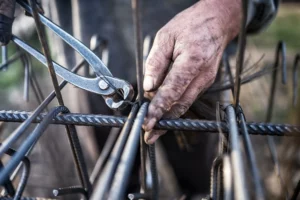LVL Formwork Timber has become increasingly popular among builders due to its exceptional qualities and numerous benefits. This article aims to shed light on why LVL Formwork Timber is the best choice for builders, providing an in-depth understanding of its definition, characteristics, production process, advantages, comparisons to other materials, cost-effectiveness, and safety considerations.
Understanding LVL Formwork Timber
LVL Formwork Timber, also known as Laminated Veneer Lumber, is a versatile and durable construction material specifically designed for formwork applications in the building industry. It is made by bonding together thin layers of wood veneers using adhesive, creating a strong and reliable product.
When it comes to construction projects, LVL Formwork Timber stands out for its exceptional versatility. It can be easily cut and shaped to fit various formwork requirements, allowing for customized solutions to meet specific project needs. This adaptability makes it a popular choice among builders and contractors looking for efficient and cost-effective formwork solutions.
Definition and Characteristics of LVL Formwork Timber
LVL Formwork Timber exhibits a range of remarkable characteristics that make it highly sought after in construction projects. It possesses excellent strength-to-weight ratio, which means it can withstand significant loads while being relatively lightweight. This makes it easier to handle during construction, reducing labor costs and overall project duration. Additionally, LVL Formwork Timber has minimal shrinkage and expansion properties, ensuring dimensional stability even when exposed to varying environmental conditions.
Furthermore, the smooth surface of LVL Formwork Timber allows for easy demolding, saving time and effort during the formwork removal process. Its consistent thickness and uniform strength properties contribute to the overall efficiency of construction projects, providing a reliable and predictable material for formwork applications.

The Production Process of LVL Formwork Timber
The production process of LVL Formwork Timber involves several stages to ensure its quality and durability. Initially, the timber veneers are graded and sorted based on their strength and visual appearance. The veneers are then glued together in a specific arrangement to achieve the desired structural performance. It is important to note that the adhesive used in the manufacturing process is environmentally friendly and complies with industry standards.
Moreover, quality control measures are implemented throughout the production process to monitor the bonding strength and structural integrity of the LVL Formwork Timber. This meticulous attention to detail guarantees that each piece of timber meets the required standards for formwork applications, providing builders and contractors with a reliable and high-performance material for their construction projects.
The Advantages of Using LVL Formwork Timber
Builders opt for LVL Formwork Timber due to the numerous advantages it provides, namely its durability, strength, versatility, flexibility, and positive environmental impact.
When it comes to construction materials, durability and strength are paramount. LVL Formwork Timber excels in both these aspects, known for its ability to withstand heavy loads and resist deformation over time. This robust nature ensures the structural integrity of the building, providing a reliable framework that can support various architectural designs and functionalities. Find more about durability at https://www.engr.psu.edu/ce/courses/ce584/concrete/library/materials/aggregate/durability.htm
Durability and Strength of LVL Formwork Timber
LVL Formwork Timber is renowned for its exceptional durability and strength. It can withstand heavy loads and resist deformation, ensuring the longevity of the structure it supports. This durability also minimizes the need for frequent replacements, reducing maintenance costs in the long run.
Moreover, the strength of LVL Formwork Timber translates to enhanced safety on construction sites. Builders can rely on this material to maintain stability and security during the building process, offering peace of mind and assurance of a solid foundation for the entire project.
Versatility and Flexibility in Construction
One of the key advantages of LVL Formwork Timber is its versatility and flexibility in various construction applications. It can be easily customized and shaped to suit specific project requirements, allowing builders to achieve unique design elements. Additionally, its compatibility with other construction materials makes it an ideal choice for composite structures.
Furthermore, the versatility of LVL Formwork Timber extends to its adaptability in different environmental conditions. Whether used in humid climates or dry regions, this material maintains its structural integrity, making it a reliable choice for construction projects in diverse settings.
Environmental Impact of Using LVL Formwork Timber
LVL Formwork Timber has a positive environmental impact, as it is made from sustainably sourced timber and can be recycled at the end of its lifecycle. By choosing LVL Formwork Timber, builders contribute to reducing carbon emissions and promoting sustainable building practices.
Additionally, the eco-friendly nature of LVL Formwork Timber aligns with green building standards and certifications, making it a preferred choice for environmentally conscious construction projects. This emphasis on sustainability not only benefits the environment but also enhances the overall reputation and value of the completed structure in the eyes of environmentally aware stakeholders.
Comparing LVL Formwork Timber to Other Materials
When considering construction materials, it is essential to compare their attributes with other available options, such as steel, concrete, and traditional wood.
But let’s dive deeper into the comparisons and explore the unique advantages that LVL Formwork Timber has over these materials.
LVL Formwork Timber vs. Steel
LVL Formwork Timber offers significant advantages over steel in terms of cost, versatility, and environmental impact. While steel is known for its strength, it is often more expensive and requires specialized labor for installation. This means that not only does it cost more upfront, but it also adds to the overall project expenses due to the need for skilled workers. On the other hand, LVL Formwork Timber provides similar structural performance at a lower cost and is easier to handle and shape during construction. Its lightweight nature allows for effortless transportation and installation, reducing both time and labor costs. Moreover, LVL Formwork Timber has a lower carbon footprint compared to steel, making it a more sustainable choice for environmentally conscious projects. To learn more about carbon click here.
LVL Formwork Timber vs. Concrete
When compared to concrete, LVL Formwork Timber stands out due to its lightweight nature, ease of handling, and reduced construction time. Unlike concrete, which requires curing time, LVL Formwork Timber can be used immediately, accelerating project schedules. This not only saves time but also allows for faster progress and completion of construction projects. Additionally, LVL Formwork Timber offers better insulation properties, making it suitable for energy-efficient designs. Its ability to provide thermal resistance helps in maintaining a comfortable indoor environment while reducing energy consumption.
LVL Formwork Timber vs. Traditional Wood
Traditional wood, although widely used, can pose limitations in terms of strength and durability. LVL Formwork Timber, being engineered using layers of veneers, offers superior strength and consistency compared to traditional wood. The manufacturing process involves bonding these veneers together, resulting in a material that is less prone to warping, splitting, or bending. This ensures stability throughout the construction process, reducing the need for costly repairs or replacements. Moreover, LVL Formwork Timber’s engineered structure allows for better load-bearing capacity, making it suitable for a wide range of applications, from residential to commercial projects.
So, when it comes to choosing the right material for your construction needs, LVL Formwork Timber proves to be a cost-effective, versatile, and sustainable option that outshines its counterparts. Its unique attributes make it a reliable choice for builders and architects looking to optimize both performance and efficiency in their projects.
The Cost-effectiveness of LVL Formwork Timber
In addition to its various advantages, LVL Formwork Timber proves to be cost-effective for builders in both the short and long term.
When considering the cost-effectiveness of LVL Formwork Timber, it is essential to delve deeper into the factors that contribute to its economic benefits. One key aspect is the material’s longevity and durability, which significantly impact the overall expenses associated with construction projects. The robust nature of LVL Formwork Timber ensures that it maintains its structural integrity over extended periods, reducing the need for frequent replacements and repairs.
Initial Costs and Long-term Savings
While the initial cost of LVL Formwork Timber may be slightly higher compared to traditional wood, its long-term savings outweigh the initial investment. Due to its durability and minimal maintenance requirements, builders can save on frequent replacements and maintenance costs, resulting in significant financial benefits over the life of the structure.
Moreover, the cost-effectiveness of LVL Formwork Timber extends beyond the construction phase. The material’s ability to withstand various environmental conditions without deteriorating ensures that ongoing maintenance expenses remain minimal. This resilience translates into long-term savings for builders and project owners, making it a prudent financial choice for sustainable construction practices.
Maintenance and Replacement Costs
The maintenance and replacement costs associated with LVL Formwork Timber are relatively low. Its resistance to shrinkage, warping, and decay minimizes the need for repairs or replacements, allowing builders to allocate their resources effectively.
Furthermore, the low maintenance requirements of LVL Formwork Timber contribute to its cost-effectiveness by reducing the need for frequent interventions by construction professionals. This not only saves money but also ensures that projects stay on schedule, avoiding costly delays that can arise from unexpected maintenance issues. By prioritizing materials that offer long-term durability and cost savings, builders can optimize their construction budgets and deliver high-quality structures that stand the test of time.
Safety Considerations When Using LVL Formwork Timber
Builders prioritize safety in all construction projects, and LVL Formwork Timber helps enhance safety measures.
Fire Resistance of LVL Formwork Timber
LVL Formwork Timber has excellent fire resistance properties. It can withstand high temperatures for an extended period, providing valuable time for evacuation and firefighting in case of an emergency. These properties make it a reliable choice for fire-sensitive structures.
Additionally, the manufacturing process of LVL Formwork Timber involves the use of adhesives that contribute to its fire resistance. These adhesives are carefully selected to enhance the overall performance of the timber, making it a preferred choice in situations where fire safety is a critical concern.

Handling and Installation Safety
Builders appreciate LVL Formwork Timber’s lightweight nature, as it reduces handling risks and injuries during construction. Its ease of installation further enhances safety, allowing for efficient and secure assembly on the construction site.
Moreover, the dimensional stability of LVL Formwork Timber minimizes the risk of warping or twisting during handling and installation. This stability ensures that the timber maintains its structural integrity, reducing the chances of accidents or structural failures on the construction site.
In conclusion, LVL Formwork Timber stands out as the best choice for builders, offering exceptional durability, strength, versatility, and environmental benefits. Comparisons to other materials illustrate its cost-effectiveness and superior properties. Moreover, safety considerations highlight the added value it brings to construction projects. By opting for LVL Formwork Timber, builders ensure optimal performance, sustainability, and safety throughout their construction endeavors.
Find more at: Top Suppliers of LVL Formwork for Construction Projects


